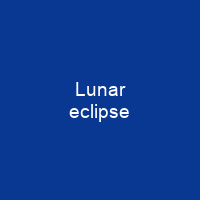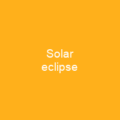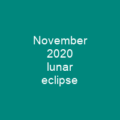Understanding Lunar Eclipses: A Dance of Shadows and Light
‘Have you ever wondered what happens when the Earth casts its shadow upon our beloved Moon?’ This phenomenon, known as a lunar eclipse, is not just an astronomical event but also a fascinating spectacle that has captivated human imagination for centuries. Let’s dive into the intricacies of this cosmic dance and unravel the mystery behind it.
The Basics: When and Why?
A lunar eclipse occurs when the Moon moves into the Earth’s shadow, causing it to darken. This alignment happens during a full moon phase and is only possible when the Sun, Earth, and Moon are aligned. The type and length of a lunar eclipse depend on the Moon’s proximity to its node.
Types of Lunar Eclipses
There are three types of lunar eclipses:
- Penumbral lunar eclipse: The Moon’s near side passes into the Earth’s penumbra, causing subtle dimming of the lunar surface.
- Partial lunar eclipse: One part of the Moon is in the Earth’s umbra, while the other part is in the Earth’s penumbra.
- Total lunar eclipse: The entire Moon enters the Earth’s umbra, causing it to appear reddish due to refracted sunlight. A total lunar eclipse can last up to two hours and is safe to view without eye protection.
The Central Lunar Eclipse: A Rare Beauty
A central lunar eclipse, a total lunar eclipse during which the Moon passes near and through the center of Earth’s shadow, contacting the antisolar point, is relatively rare. This type of eclipse adds an extra layer of beauty to the already mesmerizing event.
Contacts: The Dance of Shadows
The timing of a total lunar eclipse is determined by its ‘contacts,’ moments when the Moon enters and exits Earth’s shadow:
- P1 (First contact): Beginning of the penumbral eclipse.
- U1 (Second contact): Beginning of the partial eclipse.
- U2 (Third contact): Beginning of the total eclipse.
- Greatest eclipse: The peak stage of the total eclipse.
- U3 (Fourth contact): End of the total eclipse.
- U4 (Fifth contact): End of the partial eclipse.
- P4 (Sixth contact): End of the penumbral eclipse.
The Danjon Scale: Rating the Darkness
To rate the overall darkness of a lunar eclipse, the Danjon scale was devised by André Danjon. Here’s how it works:
- L = 0: Very dark eclipse; Moon almost invisible, especially at mid-totality.
- L = 1: Dark eclipse; gray or brownish in coloration.
- L = 2: Deep red or rust-colored eclipse.
- L = 3: Brick-red eclipse.
- L = 4: Very bright copper-red or orange eclipse.
Misconceptions: Solar vs. Lunar Eclipses
There is often confusion between a solar and lunar eclipse. The Moon does not completely darken as it passes through the umbra because of Earth’s atmosphere; shorter wavelengths are scattered, resulting in a reddish coloration. The amount of refracted light depends on atmospheric conditions, controlling the color’s intensity.
Cultural Myths: A Lunar Eclipse Tale
Throughout history, various cultures have myths related to lunar eclipses:
- Egyptians: The eclipse is a sow swallowing the Moon.
- Mayans and Incas: A jaguar eats the Moon, causing a blood moon.
- Mesopotamians: Seven demons attack the Moon and king.
Hindus believe bathing in the Ganges River after an eclipse will achieve salvation. In order to prevent an attack on the king, Mesopotamians made someone pretend to be the king so they would be attacked instead. Chinese people rang bells to prevent wild animals from biting the Moon during a lunar eclipse.
Conclusion: A Cosmic Symphony
A lunar eclipse is more than just a celestial event; it’s a cosmic symphony that has captivated human imagination for millennia. From ancient myths to modern scientific understanding, these eclipses continue to inspire awe and wonder. So, the next time you witness one, take a moment to appreciate this rare dance of shadows and light in our vast universe.

You want to know more about Lunar eclipse?
This page is based on the article Lunar eclipse published in Wikipedia (retrieved on March 14, 2025) and was automatically summarized using artificial intelligence.






